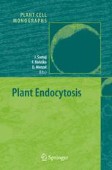Search
Search Results
-
QSAR and Molecular Modeling Studies of HIV Protease Inhibitors
Acquired immunodeficiency syndrome (AIDS) and its related disorders, caused by retrovirus human immunodeficiency virus (HIV) are a major health...
-
Auxin Transport and Recycling of PIN Proteins in Plants
Polar transport of the phytohormone auxin is mediated by plasma-membrane and endosome localized carrier proteins. PIN proteins are the best...
-
MDR/PGP Auxin Transport Proteins and Endocytic Cycling
Auxin is an essential regulator of plant growth and development. Polarized transport of auxin is responsible for apical dominance, tropic growth,...
-
Senescence and Cell Cycle Control
In response to various stresses, such as telomere shortening during continuous proliferation, oxidative stress, DNA damage and aberrant oncogene...
-
Telomeres in fungi
Telomeres are the functional elements concluding and defining each linear chromosome in eukaryotes. They play an essential role in protecting genetic...
-
The genome of the filamentous fungus Ashbya gossypii: annotation and evolutionary implications
The 9.2 Mb genome of the filamentous fungus Ashbya gossypii consists of seven chromosomes carrying 4718 protein coding genes, 194 tRNA genes, at...
-
Schizosaccharomyces pombe comparative genomics; from sequence to systems
The fission yeast Schizosaccharomyces pombe is becoming increasingly important as a model for the characterization and study of many globally...
-
Chromatin Modifications in DNA Repair
A requirement of nuclear processes that use DNA as a substrate is the manipulation of chromatin in which the DNA is packaged. Chromatin...
-
Quality control of proteins in the mitochondrion
The quality control of proteins within mitochondria is ensured by conserved and ubiquitous ATP-dependent molecular chaperones and proteases, present...
-
The Hsp60 chaperonins from prokaryotes and eukaryotes
The Hsp60 molecular chaperones (the chaperonins) are essential proteins throughout biology. They can be separated into two evolutionary classes: the...
-
Regulation of the heat shock response by heat shock transcription factors
The heat shock response is characterized by a rapid and robust increase in heat shock proteins upon exposure to protein-damaging stresses. This...
-
Template-induced protein misfolding underlying prion diseases
Proteins with prion properties are closely associated to a class of fatal neurodegenerative illnesses in mammals and to the emergence and propagation...
-
Systems Biology: necessary developments and trends
At the end of this definition of Systems Biology through exampling, we discuss ambitions, goals, and challenges relating to this new discipline. We...
-
Higher Harmonic Generation Microscopy
Higher harmonic-generation, including second harmonic generation and third harmonic generation, leaves no energy deposition to the interacted matters...
-
Conserved ribosomal RNA modification and their putative roles in ribosome biogenesis and translation
rRNA maturation requires extensive covalent modifications of riboses and bases. These modifications concern exclusively the most conserved regions of...
-
Biosynthesis and function of tRNA wobble modifications
Post-transcriptional modifications at the first (wobble) position of the tRNA anticodon participate in the precise decoding of the genetic code that...
-
From isolation to integration, a systems biology approach for building the Silicon Cell
In the last decade, the field now commonly referred to as systems biology has developed rapidly. With the sequencing of whole genomes and the...
-
Beads Arraying and Beads Used in DNA Chips
The present article draws a general picture of the bead assisted DNA immobilization on chips. The authors wish to present these systems since...
-
New P-Chirogenic Phosphine Ligands and Their Use in Catalytic Asymmetric Reactions
This chapter is concerned with an update on the preparation and applications of optically active phosphine ligands which bear the chiral center at a...
-
Donor-Acceptor Complexes of Low-Coordinated Cationic π-Bonded Phosphorus Systems
Cationic low-coordinated π-bonded phosphorus compounds add Lewis donors, such as amines or phosphines. In contrast to the trigonal bipyramide formed...
